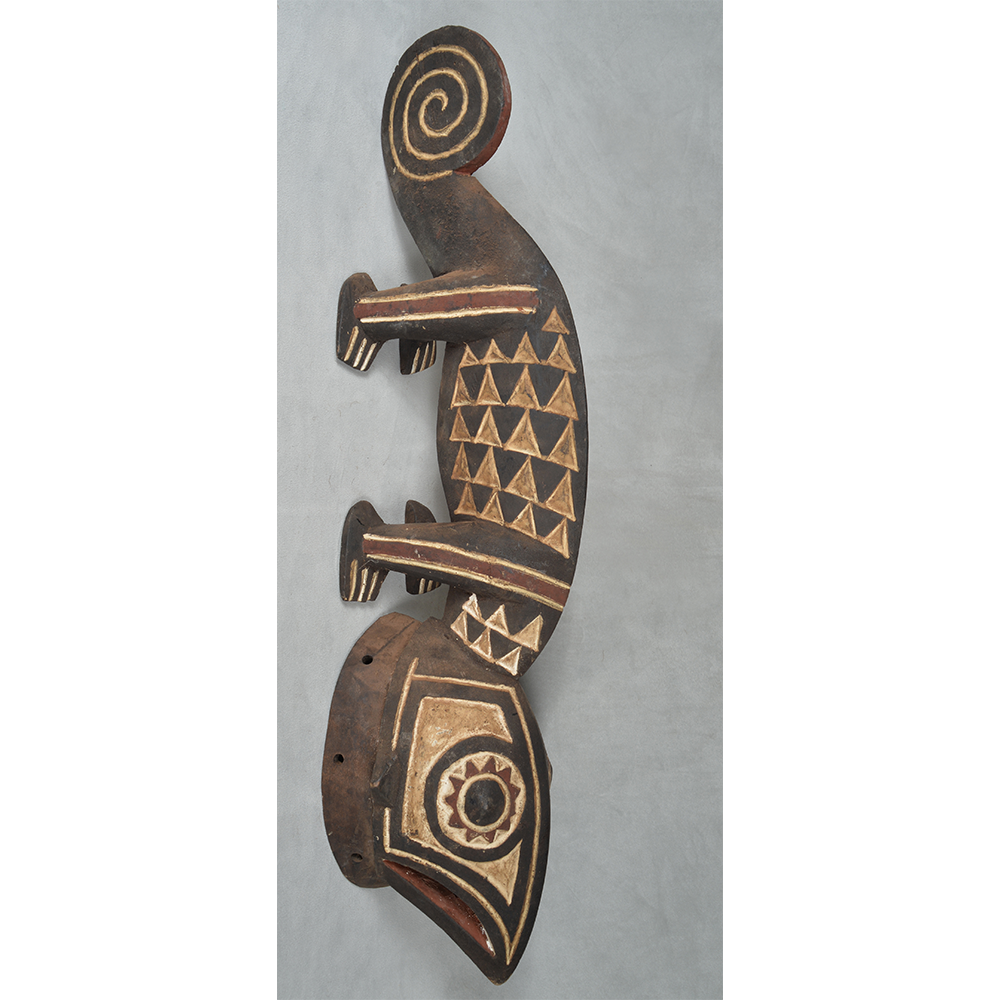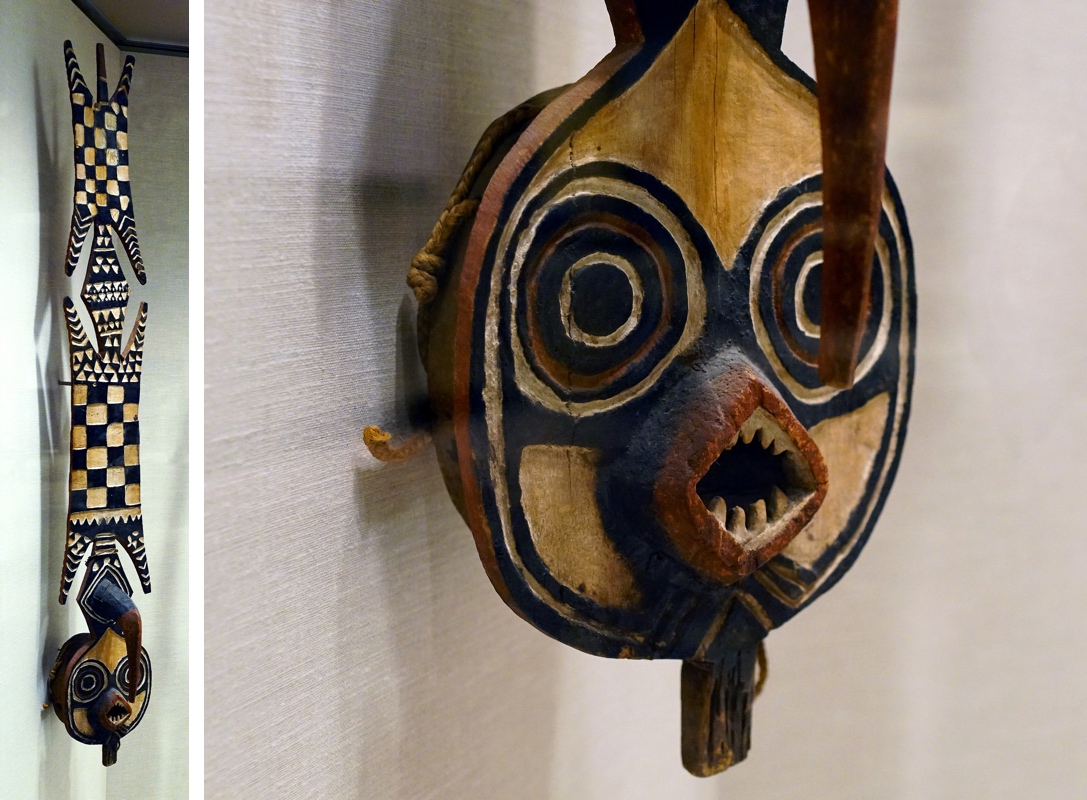Non Western Art
Plank Mask (Nwantantay)
Bwa people, made in Burkino Faso
According to Dr. Peri Klemm from khanacademy.org, the mask is likely from the 18th and 18th century. The Bwa people are located in the country of Burkino Faso, which is in West Africa (metmuseum.org). The masks of this type had many purposes, one of the uses was to honor the deceased and guide their spirit to the afterlife (metmuseum.org).
The art elements of the mask that I like is the texture, the patterns and the balance. I enjoy the texture of the wood, it appears to be smooth around the face and more coarse around the mouth. I noticed the patterns of each eye, which is concentric circles. The mask posses balance, which is the symmetrical face.

Nuna Chameleon Mask, ca. 2000
located in Burkino Faso
The Nuna people are located in Burkino Faso (maskmuseum.org). The ceremonial Nuna Chameleon Mask purposes include "Adult Initiation; Divination; Entertainment; Funeral; Purification; Spirit Invocation" (maskmuseum.org).
The art elements I like is the shapes, the rhythm and the patterns. I find the entire shape of the chameleon impressive. The triangles across its body has a rhythm, like they're pointing down to the tail. I saw the pattern of the eye, each triangles base is fixed to a certain radius. The eye pattern also resembles the sun.
Mask: Bush Pig, 19-20th century
Nuna or Bwa?, found in Burkino Faso.
While the mask was found in Burkino Faso, it's unclear on whether it originated from the Nuna or Bwa people. The mask was used for honoring the dead and agricultural festivals (metmuseum.org).
The art elements I like about this piece is the texture, the balance and the emphasis of the tusks. The texture on the tusks is really rugged, while the cylinders on the side of the head and the face are smooth. The mask posses a balance, or a symmetry on the vertical axis. The emphasis that this mask possesses is the tusks, my eyes were drawn to them. It's sort of unnatural seeing tusks going towards the head, instead of protruding away from the head.
African art in the 17th century was usually categorized as insignificant, which means the artist and the year it was created wasn't recorded (Klemm). That attitude towards African Art in the 17th-18th century can be called ethnocentrism. I found each mask to be a work of art and expertly crafted.
Bibliography
Metmuseum.org, www.metmuseum.org/art/collection/search/310832.
Metmuseum.org, www.metmuseum.org/art/collection/search/312406.
Klemm, Peri. “The Reception of African Art in the West (Article).” Khan Academy, Khan Academy, www.khanacademy.org/humanities/art-africa/african-art-introduction/african-art-europe/a/reception-of-african-art-in-the-west2.
“Nuna Chameleon Mask.” Second Face, www.maskmuseum.org/mask/nuna-chameleon-1/.


I was fascinated by the masks used here. It seems masks are a wide spread creation and use for people all over the world. The plank mask is the most interesting looking at it as the wear-ers point of view. I can only image wearing something soo tall and possibly heavy. The Bwa people and many tribes through out Africa do have a various array of masks, which I find very interesting. Thank you for sharing.
ReplyDeleteHey James, awesome blog! These masks are a bit freaky but also very cool. The use of different patterns, shapes, and texture are so captivating I can't believe it's all made from wood. I've definitely seen this style of art before, not just from learning about African culture but also in different movies. My favorite piece you chose is definitely the Nuna Chameleon Mask because, as you said, it is very impressive. There is a lot of detail in this piece, I would've loved to learn the meaning behind it and its significance! I also would have loved to learn more about the history of the Bwa people.
ReplyDelete